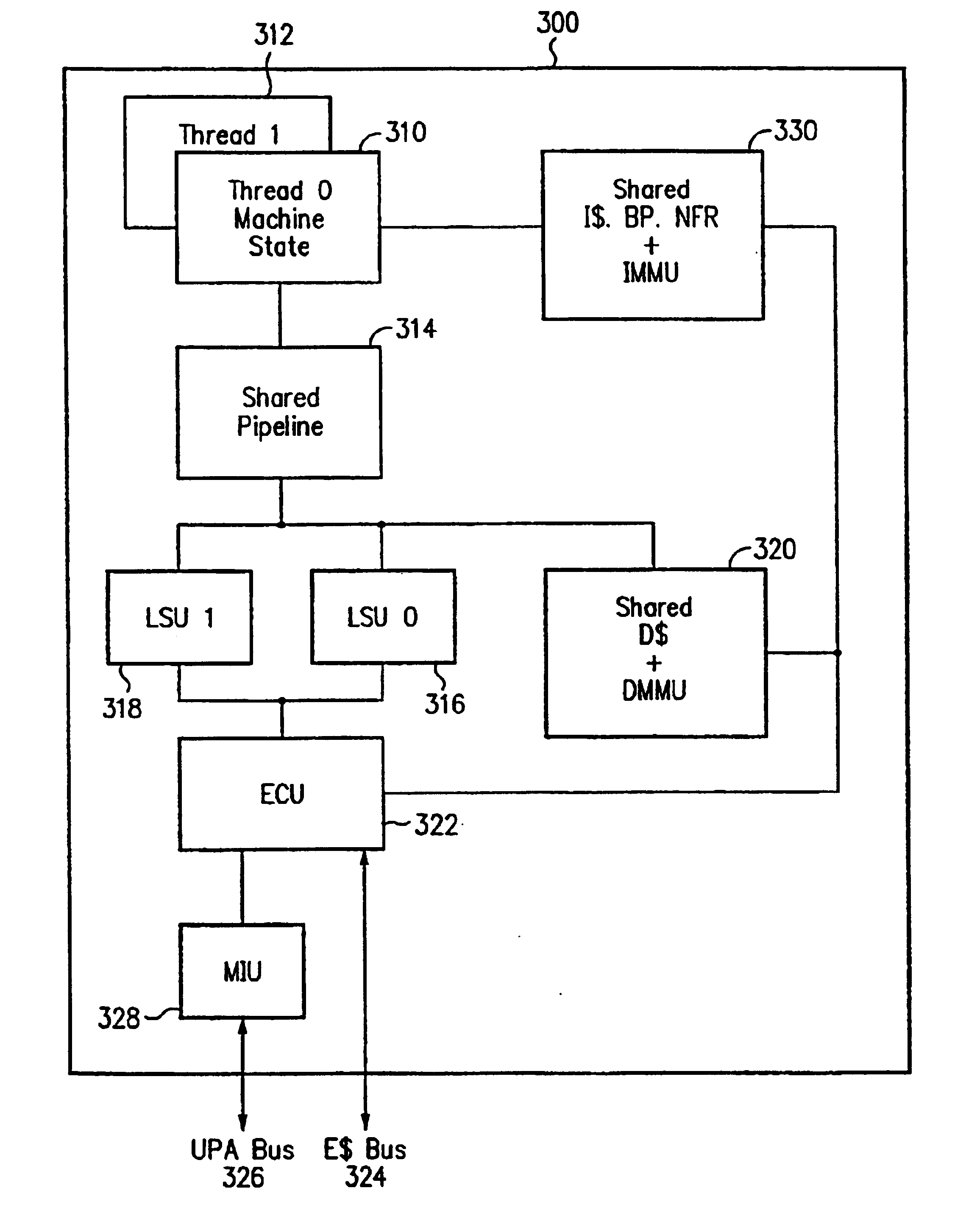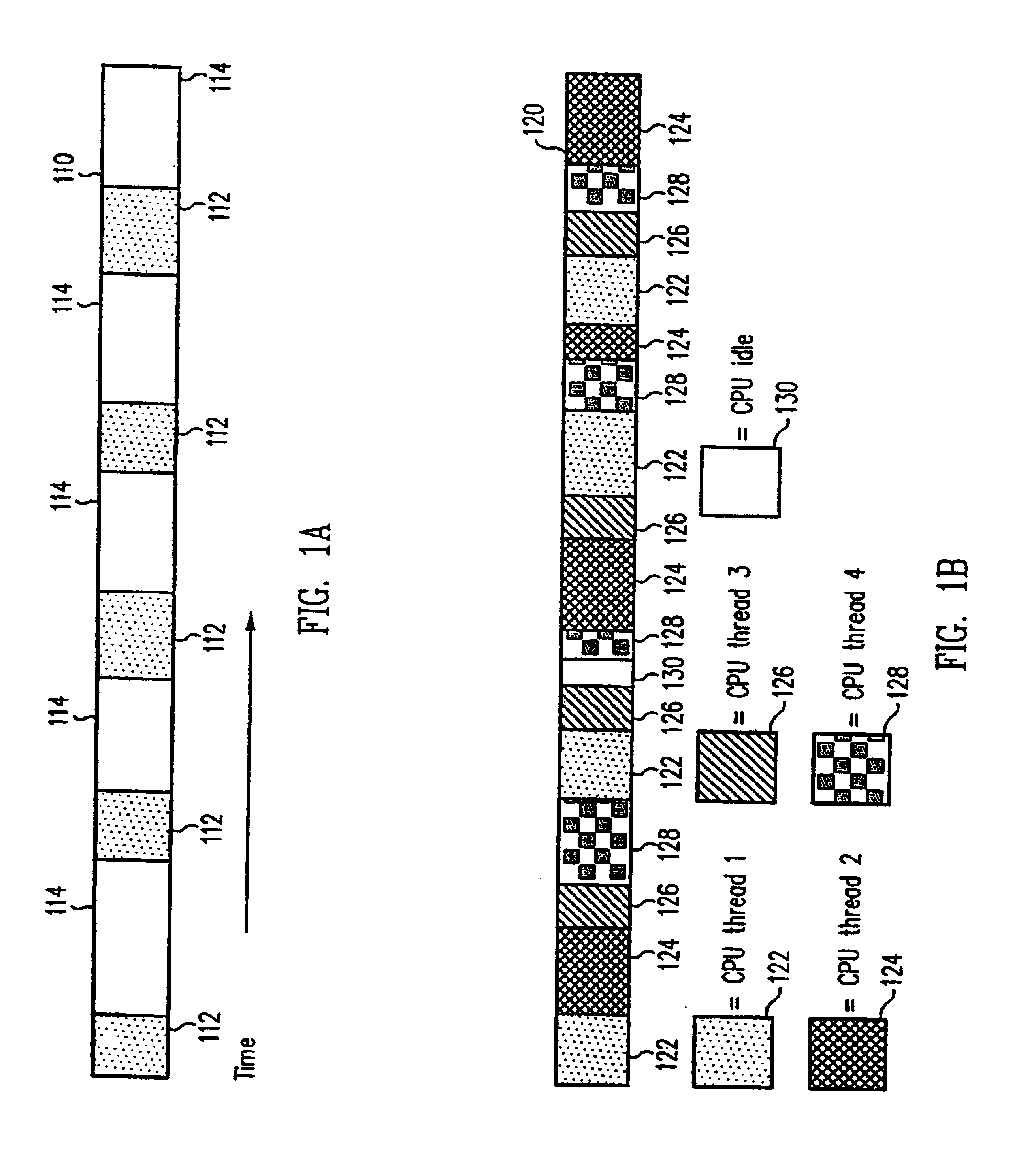Processor with multiple-thread, vertically-threaded pipeline
a processor and pipeline technology, applied in the field of processor or computer architecture, can solve the problems of wasting a lot of time waiting for data, stalling and idling, and wasting a large percentage of time during pipeline stalling and idling, so as to increase the proportion of execution time, reduce wasted cycle time, and increase system parallelism
- Summary
- Abstract
- Description
- Claims
- Application Information
AI Technical Summary
Benefits of technology
Problems solved by technology
Method used
Image
Examples
Embodiment Construction
)
[0050]Referring to FIGS. 1A and 1B, two timing diagrams respectively illustrate execution flow 110 in a single-thread processor and instruction flow 120 in a vertical multithread processor. Processing applications such as database applications spend a significant portion of execution time stalled awaiting memory servicing. FIG. 1A is a highly schematic timing diagram showing execution flow 110 of a single-thread processor executing a database application. In an illustrative example, the single-thread processor is a four-way superscalar processor. Shaded areas 112 correspond to periods of execution in which the single-thread processor core issues instructions. Blank areas 114 correspond to time periods in which the single-thread processor core is stalled waiting for data or instructions from memory or an external cache. A typical single-thread processor executing a typical database application, executes instructions about 30% of the time with the remaining 70% of the time elapsed in...
PUM
 Login to View More
Login to View More Abstract
Description
Claims
Application Information
 Login to View More
Login to View More - R&D
- Intellectual Property
- Life Sciences
- Materials
- Tech Scout
- Unparalleled Data Quality
- Higher Quality Content
- 60% Fewer Hallucinations
Browse by: Latest US Patents, China's latest patents, Technical Efficacy Thesaurus, Application Domain, Technology Topic, Popular Technical Reports.
© 2025 PatSnap. All rights reserved.Legal|Privacy policy|Modern Slavery Act Transparency Statement|Sitemap|About US| Contact US: help@patsnap.com



